Everdell is probably one of the bigger board game hits in recent memory, racking up multiple awards and becoming a standard fixture on the shelves of many a game enthusiast. It also was a huge success on Kickstarter, as were its subsequent Bellfaire, Spirecrest, and Pearlbrook expansions that released in 2019, and as such we were excited when Starling Games provided us a copy to check out. Not only did that, but they provided us the Collector’s Edition of the game, which included upgraded pieces as well as the Rugwort pack, Legendary cards, and Extra! Extra! cards added in since the game’s release. But does it really live up to the hype? Is it as idyllic as the woodland realm the game depicts, or is the heart of the Evertree rotten?
What’s In The Box?
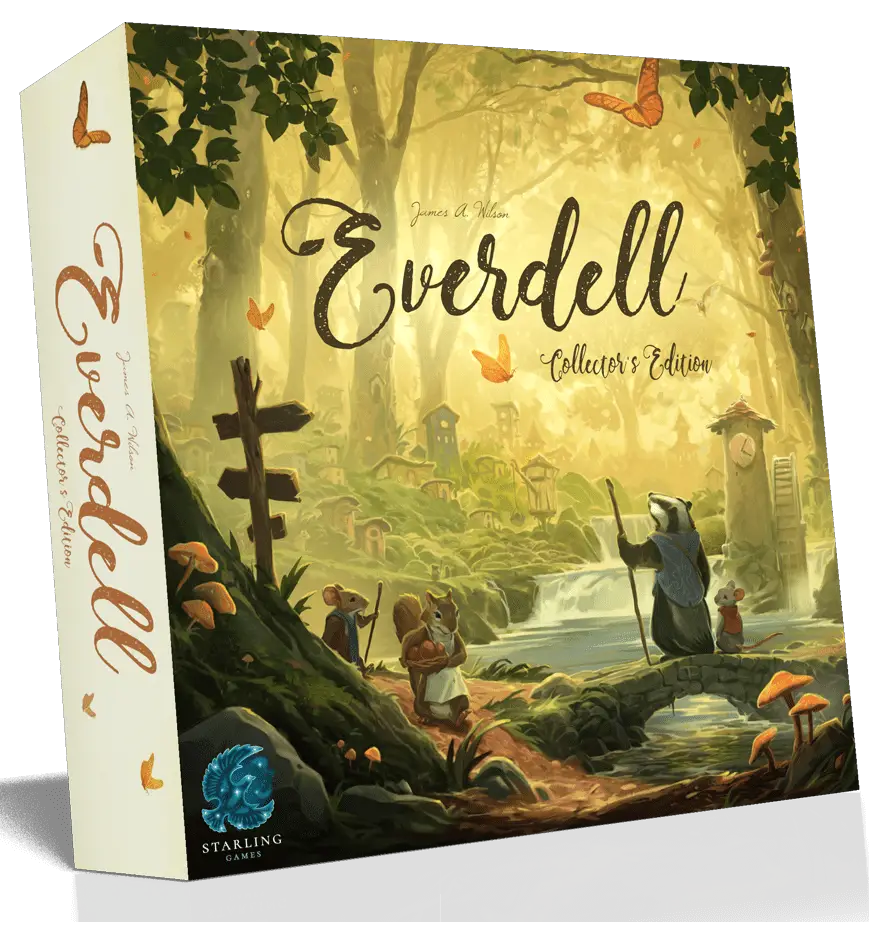
Even though I had the Collector’s Edition of the game, the components that were part of the base game are fantastic. All of the resources have their own plastic pieces, with the crystal amber and rubbery berries being particularly good looking pieces to have in front of you and hold in the hand. The CE adds in metal point markers (hefty ones at that) and wooden “occupied” tokens that sit on your cards easier. It also includes several little expansions that don’t really revolutionize the game, but are very fun and increase the variety and therefore replayability of the game. I particularly like the Legendary cards, which add in super powered versions of existing buildings and villagers that give players a new thing to compete for and alter the game state quite a bit.
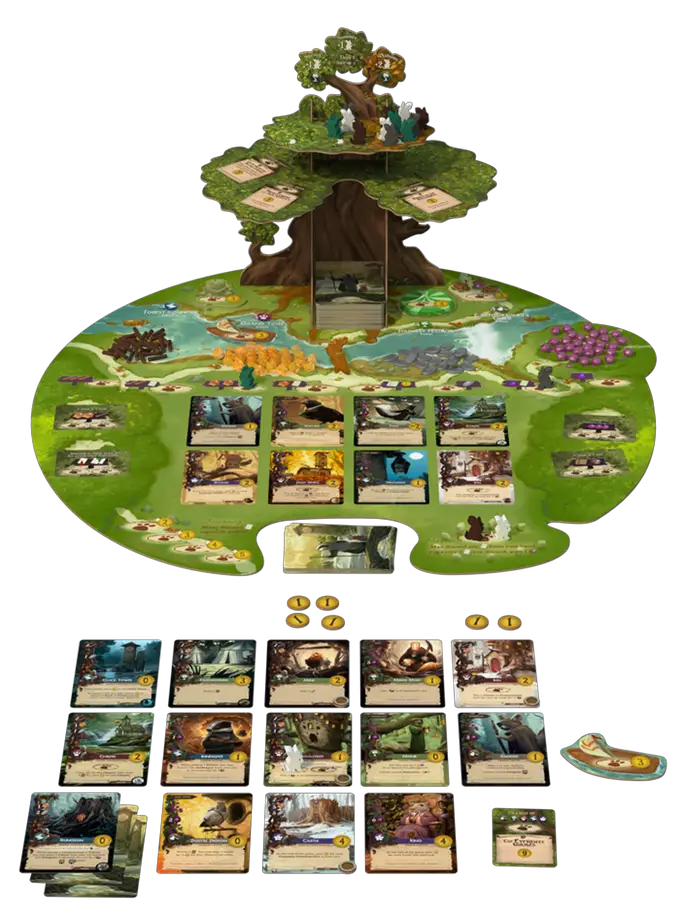
The big centerpiece of the game is the Evertree itself, a 3D, multi-platform tree that actually serves a purpose on the board. It holds each season’s meeples in reserve, shows each game’s four special event cards, and serves as a place to gold the deck. If you’re a serious Everdell player, there’s wooden versions of the Evertree that show up (they sold out of them at Day 1 of GenCon), but the base version is, again, very nice and sturdy cardboard. The board that the tree sits on one end of is a very pleasing shape, with a place for all of the materials and clearly marked spaces for your meeples.
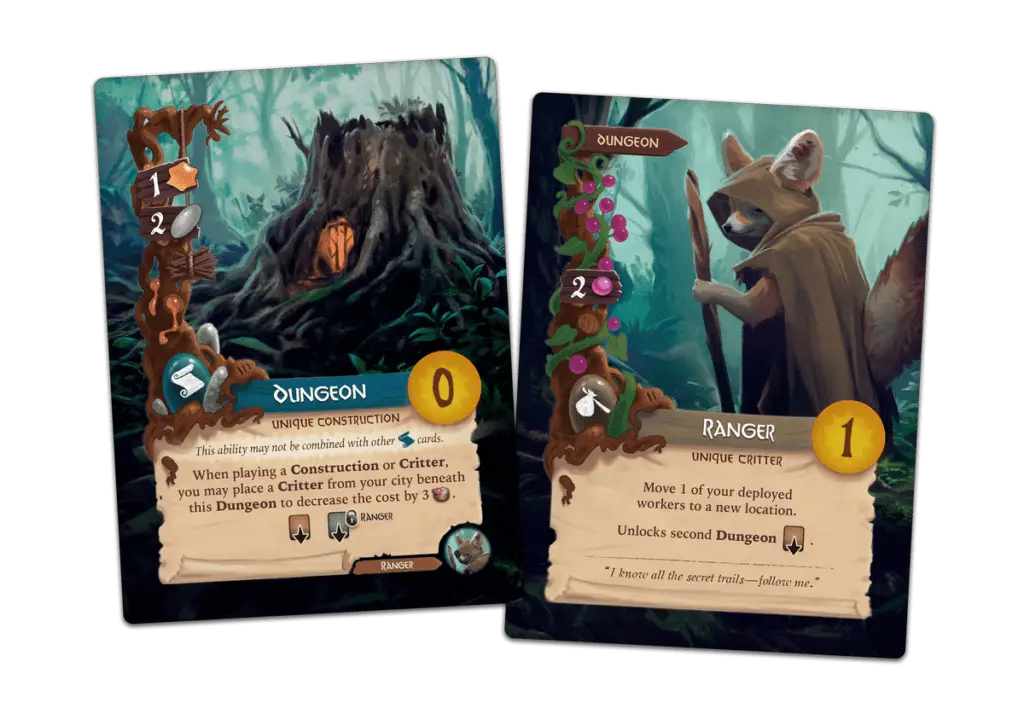
Any card game, which Everdell is at its core, lives and dies by its art. And boy howdy does this game have some killer art. While obviously the physical bits and bobs (and tree) get a lot of the attention, the art is what really puts the game over the edge aesthetically. It has all the woodland charm of The Wind and the Willows or Redwall, but also doesn’t shy away from the darker aspects of the forest. Atmospheric cards like the Dungeon or Graveyard help keep the art from becoming unbearably twee, and help your community feel like a real town as opposed to a purely fanciful storybook village.
How’s It Play?
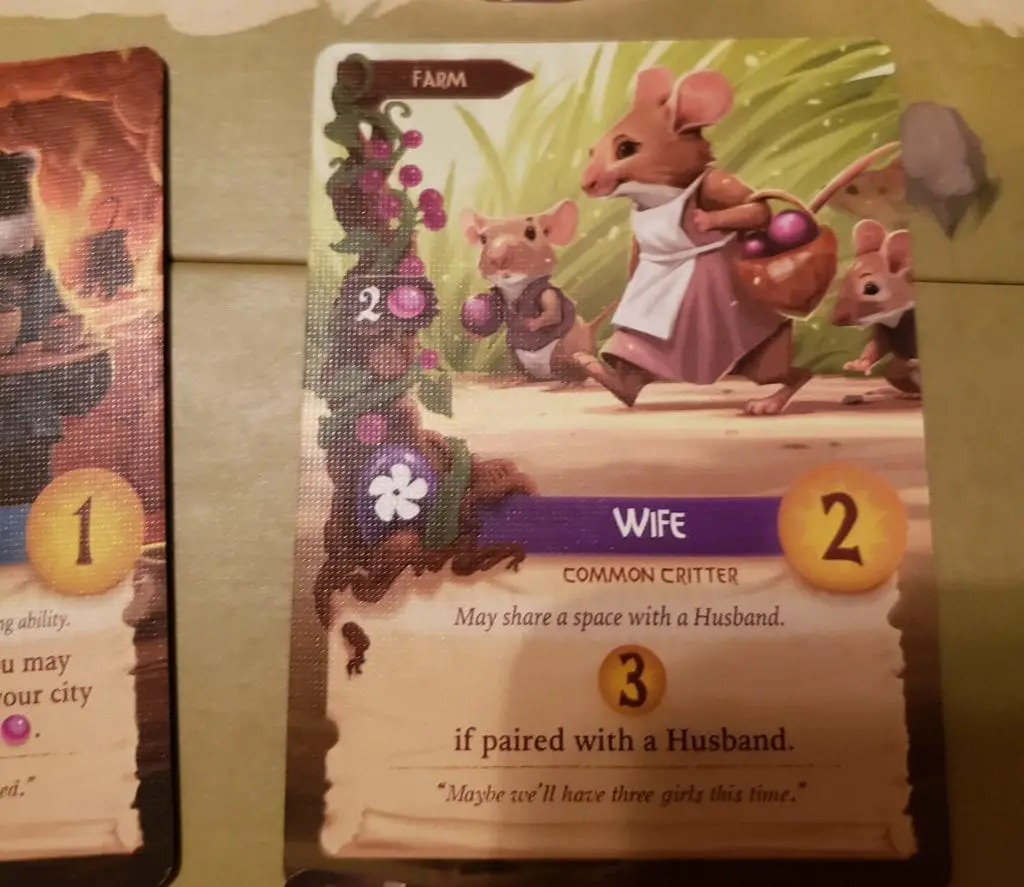
The gameplay in Everdell is extremely straightforward. Place your workers (shaped like different woodland critters) on different spaces, each of which give you resources, let you draw cards, or get some other benefit. Each card is either a villager or a building, which cost different combinations of resources to play into your community. They each have some benefit to you, as well as (usually) a victory point value assigned to them. A neat quirk of the game is how most critters are paired with a building, and if you construct a building your can play the associated critter for free to “occupy” it. It only works once per building, but it’s a great example of design and flavor working in tandem. There are also multiple special events, some on the board and some on the tree, that reward certain combinations of critters and buildings. These aren’t extremely powerful, not enough to decide the game by any means, but are a good way to guide your early game. You can also combine cards in your community to create cascading effects, but the game isn’t built around those necessarily and you can get along just fine without them.
Hardcore board game vets might find the game a little simple but, really, this isn’t meant to be a battle of wits and strategic mastery. But that also doesn’t mean the game can’t be pretty damn cutthroat as players battle for certain cards (of which there are only a few), steal from each other, and nab coveted spots on the board (the best of which are only usable by one person each season). You’ll never get mad enough to flip the table (I hope), but it can get heated. I’ll also say that while the game changes a bit in different player counts, it never loses any of its charm whether you’ve got two players or four. Same goes for single-player mode, which pits you against the evil “King” Rugwort, who challenges you across season by denying your access to the different parts of the board. It’s one of the more engaging single-player modes I’ve played, even though the size of the game makes justifying a solo game a little more difficult.
The Verdict
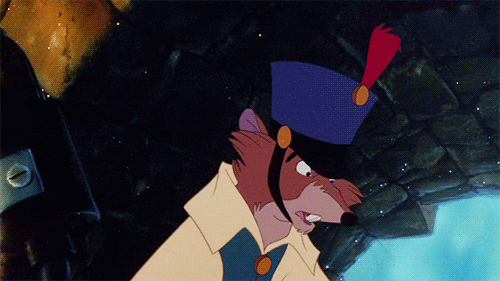
The beauty of Everdell is that it’s a fantastic entry point to more “hobbyist” board games, particularly worker placement games. As one of the most common board game types, there’s lots of real estate for gateway games that can get people into the genre without being too daunting, and I believe that Everdell fills that role extremely well. The art, table presence, and straightforward gameplay mean that it’s pretty damn easy to pick up and learn. It also changes quite a bit from game to game, meaning it’s something that can very easily come down on any game night and end in a good time.
If I were to find an issue with the game, it’s that it can come off a little bit unfocused, with a large grab-bag of design elements that are all kind of smushed together. While it ends up greater than the sum of its parts, and it’s never confusing to play, I can understand the criticism people have levied at it. But, honestly, that’s only really an issue when you’re trying to put games in (ahem) boxes, and just have them exist in relation to each other. Truly standout games like Everdell are often the hardest to classify. They don’t need to be at the bleeding edge of design, or challenge the way a kind of game is played. They’re just fun, and that’s all that matters. Throw in some beautiful art and great components, and you’ve got yourself a soon-to-be classic.
[rwp_box id=”0″]
You can pick up Everdell here for $49.99, as well as the Pearlbrook expansion, which adds in brand new resources and buildings, here for $42.75. And stay tuned to The Fandomentals for all the latest on Starling Games and the wider world of tabletop.
Thanks to Starling Games and Tabletop Tycoon for the copy used in this review. All images via Starling Games

